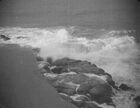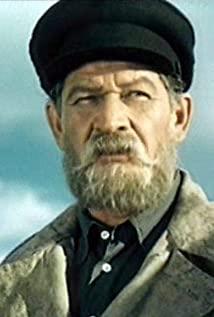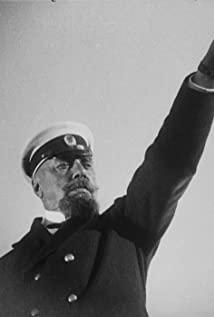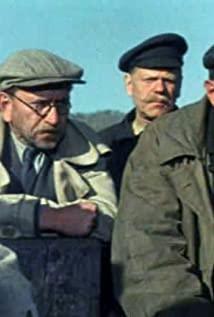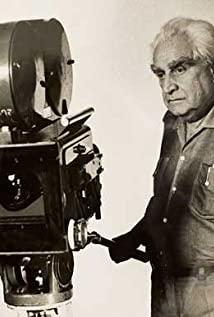The beginning of the fragment is a close-up of the red flag, and the next shot is the waving and cheering of children and women. Here the director did not use a large panoramic lens to summarize these images in one shot, but used a montage technique to connect two unrelated shots, making the crowd cheering and beckoning toward a warship. .
With the emergence of a strong tone in the subtitles and music, the rhythm of the story changes. After the subtitles, there is a close-up of the face of a woman with disheveled hair. Then the crowd moves in panic, and then an umbrella becomes bigger and bigger as a springboard. It turned into a panoramic view, and the crowd panicked. One of the shots in this group is a shot in which the bronze statue occupies the golden section line and is in the foreground. I think this picture is handled very well, because in addition to the bronze statue, one half of the middle shot of the picture is the chased army and the escape. The crowd is divided equally, and the remaining half is a gloomy church in the background. This scene shows the three-dimensional sense of the movie very well, and also reflects the contradictions between the characters and the society in the story. .
Then there is the big panorama, and the real "massacre" begins, when the crowd rushes in from the background. The director’s presentation of the Holocaust here is not to use a big scene to render its grand cruelty, but to choose a few small and unique angles, especially the perspective of the two mothers protecting their children, so that the conflict gradually rises, thus making the film Reach the climax of the whole show.
After the crowd ran in, what followed was a close-up of a person’s kneeling motion. After this shot started, there were many shots of people falling (death). These shots changed quickly. In this group of shots A child was highlighted. At first he just sat down, but after another big panoramic figure ran, the child covered his ears. What was imposed on the audience was the sound of gunshots causing the child to cover his ears, and all the people who fell to the ground were shot and killed. dead.
Then, my favorite picture with a bronze statue appeared again, but the difference was that the army gradually occupied the middle shot, and the crowd was gradually forced out of the picture. Then the Great Escape lens continued the previous shooting method. It is worth mentioning that their lights are shot from behind the crowd. This kind of light stretches people’s shadows wirelessly and expresses their emotions through the shadows. This feeling was more concrete and vivid when a mother held a dead child to denounce to the army.
For the scene where the crowd escapes, the director used it separately: large panoramic shooting behind the crowd; panoramic shooting on the side of the crowd; and mid-range shooting of a certain person or one to three groups of people. One of them is a scene of people escaping from the side. In this shot, the director lets actors enter from the left and exit from the right. In the composition, there is a bright spot, that is, a stick is placed at the golden ratio of the background. On both sides of the stick are two big trees facing each other, which is very expressive. There are many shots in this segment that can be seen. They were taken by the director after careful thought. The composition is well divided.
The shot before the child is shot is a state of tracking the child with a moving camera. It is a close-up of the child shouting "Mom" after the fall, and then a close-up of the mother looking back. After this is a series of montages, we can see that people first go around the child, then pass between the legs, and finally turn the child over, step on the belly, put on the music, step by step, interspersed in the middle With close-ups of the mother’s facial expressions, showing the mother’s shock, sadness, and anger. The subsequent plot mainly uses montages to reflect the discovery, appeal and rights protection of the female priest in the play.
After that, the army first entered the field as a shadow, and then, when the woman was photographed, her shadow was stretched so that under this visual effect, the audience would naturally think that women are weak and the army is powerful and domineering. A moving shot afterwards overlapped the shadows of women and the army. In this shot, the front of the army did not appear, so the army directly shot and killed the women.
Later, in the escape of the crowd, horses appeared in the foreground from both sides of the screen, which increased the three-dimensional sense of the picture and the sense of disorder and chaos. After that, there is a set of montages of the falling of guns and crowds. Then the running of the stroller and the exaggerated expression of a woman, the expression of a young man, and a smoking gun formed a set of montages.
Overall, it was a great film in that era.
Mori
October 2011
View more about Battleship Potemkin reviews





